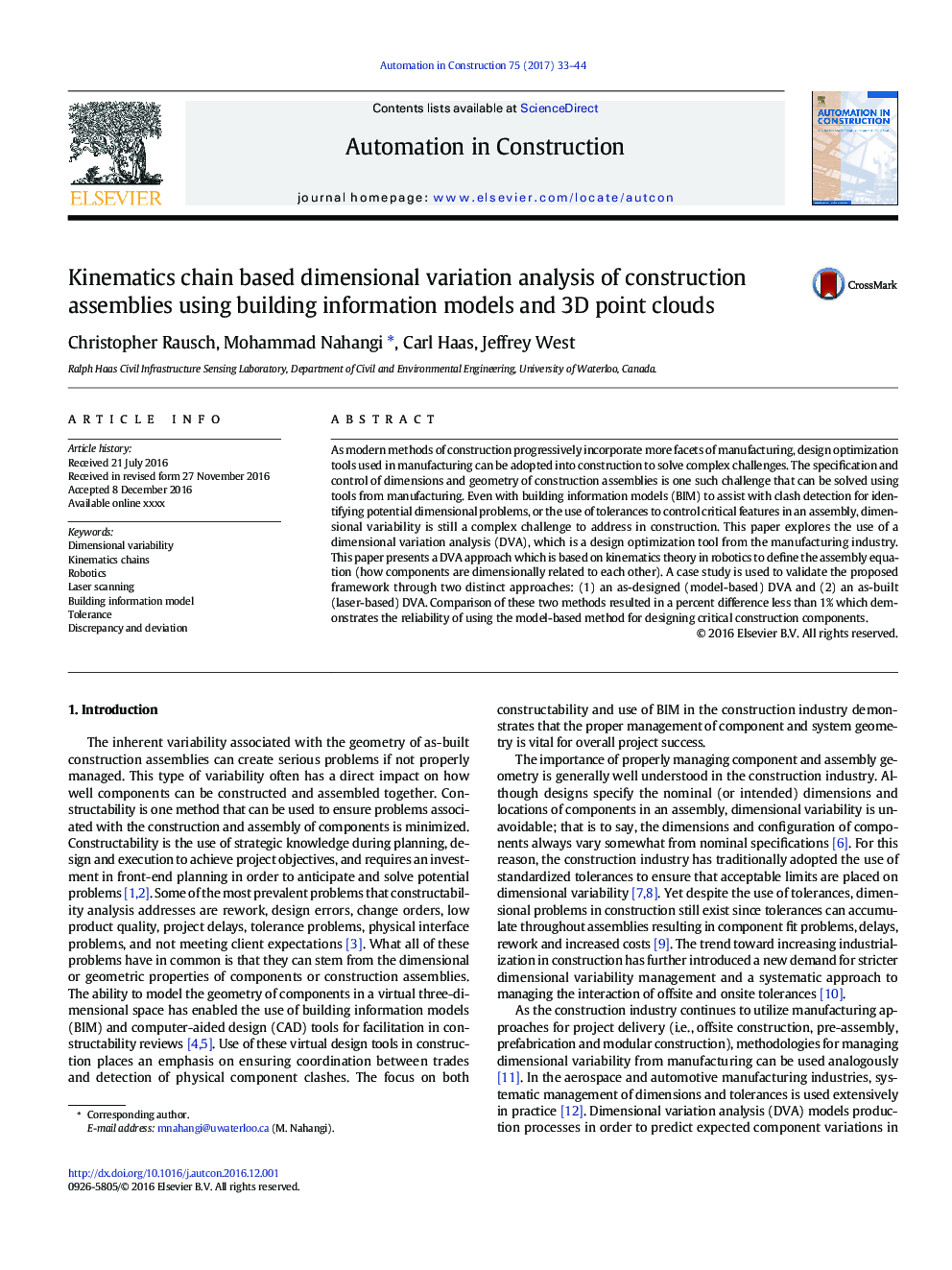| Article ID | Journal | Published Year | Pages | File Type |
|---|---|---|---|---|
| 4911373 | Automation in Construction | 2017 | 12 Pages |
Abstract
As modern methods of construction progressively incorporate more facets of manufacturing, design optimization tools used in manufacturing can be adopted into construction to solve complex challenges. The specification and control of dimensions and geometry of construction assemblies is one such challenge that can be solved using tools from manufacturing. Even with building information models (BIM) to assist with clash detection for identifying potential dimensional problems, or the use of tolerances to control critical features in an assembly, dimensional variability is still a complex challenge to address in construction. This paper explores the use of a dimensional variation analysis (DVA), which is a design optimization tool from the manufacturing industry. This paper presents a DVA approach which is based on kinematics theory in robotics to define the assembly equation (how components are dimensionally related to each other). A case study is used to validate the proposed framework through two distinct approaches: (1) an as-designed (model-based) DVA and (2) an as-built (laser-based) DVA. Comparison of these two methods resulted in a percent difference less than 1% which demonstrates the reliability of using the model-based method for designing critical construction components.
Related Topics
Physical Sciences and Engineering
Engineering
Civil and Structural Engineering
Authors
Christopher Rausch, Mohammad Nahangi, Carl Haas, Jeffrey West,
